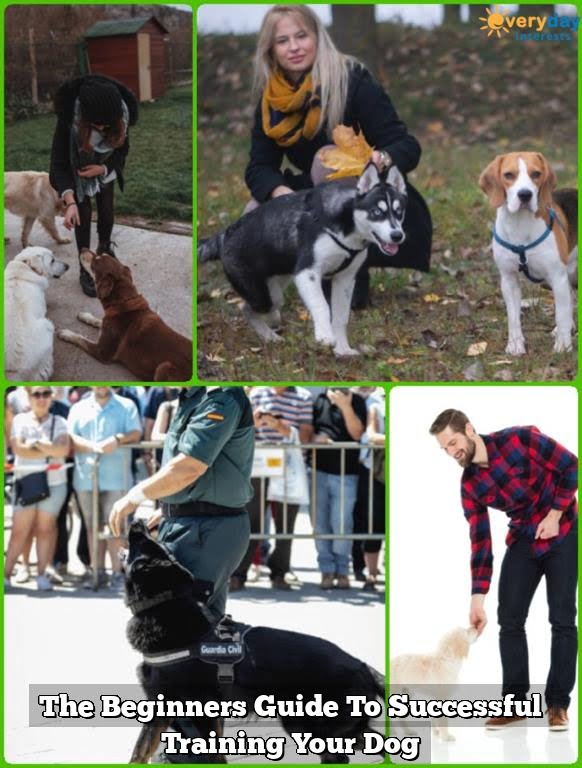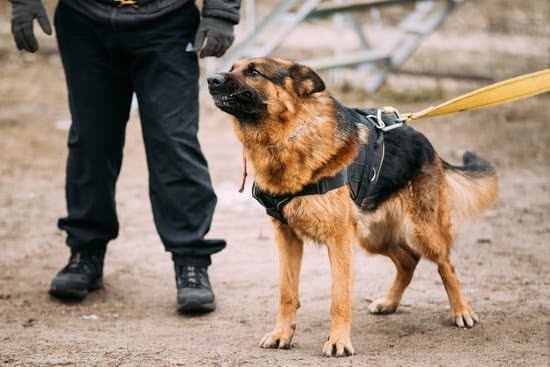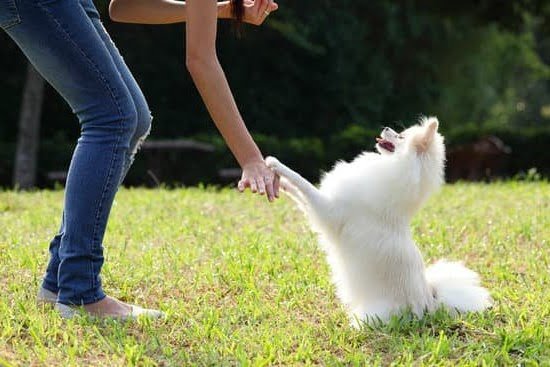What is a guide dog training? Guide dog training is the process of preparing dogs to assist individuals with visual impairments in navigating their surroundings and performing daily tasks. These highly trained animals provide invaluable support and independence to their handlers, making it essential to understand the role of guide dogs and the comprehensive training process they undergo.
Guide dogs have a long history of dedicated service to visually impaired individuals, dating back to the early 20th century. The origins and development of guide dog training have contributed to its evolution into a specialized and effective form of assistance for those in need. Understanding this rich history allows for a deeper appreciation of the impact guide dogs have on the lives of the visually impaired.
In this article, we will explore the various aspects of guide dog training, including the qualities and breed of dogs suitable for this role, the selection and training process, as well as the crucial partnership between guide dog handlers and their canine companions. Additionally, we will examine how guide dogs profoundly influence the lives of those they assist, as well as the licensing and regulations governing guide dog training programs.
Finally, we will discuss advancements in technology and training methods shaping the future of guide dog training.
The History of Guide Dog Training
Origins of Guide Dog Training
The concept of using dogs as guides for the blind can be traced back to ancient times, with references found in various cultures and traditions. However, it was not until the early 20th century that systematic and structured guide dog training programs were established. The devastating effects of World War I on soldiers’ vision led to increased awareness and interest in finding ways to support visually impaired individuals.
Early Development of Guide Dog Training
In its early stages, guide dog training primarily focused on selecting and training German Shepherds due to their intelligence and natural instinct to protect and assist their owners. As time progressed, other breeds such as Labradors, Golden Retrievers, and Standard Poodles were also found to possess the qualities required for successful guide work. The development of standard training techniques and methodologies began to take shape, laying the foundation for modern guide dog training programs.
Over time, advancements in understanding canine behavior, psychology, and communication have contributed to refining guide dog training methods. These developments have paved the way for more effective and individualized training approaches tailored to each dog’s strengths and abilities. Today, guide dog training continues to evolve with a focus on enhancing both the quality of life for visually impaired individuals and the working capabilities of guide dogs.
The Qualities and Breed of Dogs Suitable for Guide Dog Training
When it comes to guide dog training, the selection of the right breed and individual dog is crucial. Not all dogs are suitable for this specialized type of training, as it requires a specific set of qualities and characteristics.
Qualities of Suitable Guide Dogs
The ideal guide dog possesses a combination of traits such as intelligence, good temperament, adaptability, and a strong desire to work and please their handlers. They should be confident but not overly assertive, calm in various environments, and able to focus on their task even in distracting or busy surroundings. Additionally, they need to have an excellent memory and strong problem-solving skills.
Breeds Commonly Used for Guide Dog Training
While there are many breeds that can potentially make great guide dogs, some have become more recognized for their suitability in this role. Labrador Retrievers, Golden Retrievers, and German Shepherds are among the most commonly used breeds due to their intelligence, trainability, physical stamina, and gentle nature. However, mixed-breed dogs can also make excellent guide dogs if they possess the necessary traits.
Specialized Breeding Programs
To ensure that guide dogs meet specific standards in terms of health, temperament, and behavior, many organizations have established specialized breeding programs. By carefully selecting and pairing parent dogs based on their genetic makeup and overall suitability for guide work, these programs strive to produce puppies with the best potential for success in guide dog training.
It is important to remember that while certain breeds may be more commonly associated with guide dog training, ultimately it is the individual dog’s personality and abilities that will determine its suitability for this important role.
The Process of Selecting and Training Guide Dogs
Guide dog training is a specialized process that takes a puppy from its early stages of development to becoming a fully trained guide dog. This process is crucial in ensuring that the dog is well-prepared to assist visually impaired individuals in their day-to-day lives. The selection and training of guide dogs involve various stages and techniques to ensure that the dogs are capable, confident, and well-behaved.
The process begins with the careful selection of suitable breeds for guide dog training. Typically, breeds such as Labrador Retrievers, Golden Retrievers, and German Shepherds are chosen for their intelligence, obedience, and adaptability. These qualities are essential for a successful guide dog that can assist individuals with visual impairments effectively.
Once the suitable breed has been identified, the next step is selecting puppies with the right temperament and personality traits necessary for guide dog work. Puppies go through an assessment process to evaluate their behavior, reactions to different stimuli, and ability to focus. Those deemed suitable will then begin their formal training, which involves socialization, obedience training, exposure to various environments and situations, and specialized guide work.
During the training process, guide dogs-in-training undergo a rigorous program that includes learning how to navigate obstacles such as stairs or curbs, safely cross roads and intersections, resist distractions from other animals or people when working, and respond to commands from their handlers. This comprehensive training aims to prepare them for the responsibilities of guiding individuals who are visually impaired.
Ultimately, after several months of intensive training and preparation, the guide dogs undergo final evaluations before being matched with visually impaired individuals. Upon graduation from the program, these dogs are ready to make a profound impact on the lives of those they will soon be paired with. The entire process emphasizes patience, dedication, and meticulous attention to detail in order to produce highly skilled guide dogs that can enhance independence and mobility for people who are blind or visually impaired.
- Selection of suitable breeds
- Assessment of temperament
- Formal training process
- Skills acquired during training
- Final evaluation before graduation
The Role of Guide Dog Handlers
Training and partnership are essential components of the relationship between guide dog handlers and their canine companions. It is important to understand the responsibilities and practices involved in this unique partnership.
Training Guide Dog Handlers
Guide dog handlers, also known as visually impaired individuals, undergo specialized training to effectively work with their guide dogs. This training program includes learning how to give commands, care for the dog, and navigate various environments safely. Handlers must also learn about the legal rights and responsibilities associated with owning a guide dog.
- Commands: Guide dog handlers are trained to give clear and concise commands to their dogs, such as “forward,” “left,” “right,” and “stop.”
- Care: Handlers are instructed on how to groom, feed, exercise, and provide healthcare for their guide dogs.
- Navigation: Training involves teaching handlers how to navigate streets, obstacles, public transportation, and other environments with the assistance of their guide dogs.
The Partnership Between Guide Dog Handlers and Dogs
The partnership between guide dog handlers and their canine companions is based on trust, cooperation, and mutual respect. The bond formed between them is a fundamental aspect of their success in navigating the world together.
- Trust: Guide dog handlers rely on their dogs to safely guide them through various environments.
- Cooperation: Both handler and dog work together as a team to navigate obstacles and move seamlessly through different surroundings.
- Mutual Respect: The relationship between handler and guide dog is built on mutual understanding and respect for each other’s roles in the partnership.
The training of both guide dog handlers and their canine partners ensures that they can function effectively together as a team in assisting visually impaired individuals in leading independent lives. This unique bond not only enhances safety but also significantly improves the quality of life for those living with visual impairments.
The Impact of Guide Dogs on the Lives of the Visually Impaired
For individuals who are visually impaired, the impact of having a guide dog in their lives is truly life-changing. Guide dogs become a trusted companion and provide invaluable support to their handlers, allowing them to navigate the world with greater independence and confidence. These specially trained animals help their visually impaired owners move safely through their daily routines, whether it’s navigating busy city streets, crossing intersections, or traveling on public transportation.
The bond between a guide dog and its handler goes beyond simple partnership; it is a relationship built on trust, mutual respect, and a deep understanding of each other’s needs. Guide dogs not only assist their handlers in physical tasks but also provide emotional support and companionship. For many visually impaired individuals, having a guide dog can significantly improve their overall quality of life by enhancing their mobility and providing companionship that may be lacking due to vision loss.
In addition to practical assistance, guide dogs also have a profound impact on the emotional well-being of their handlers. Many visually impaired individuals experience increased confidence and self-esteem when they have a guide dog by their side. By providing a sense of security and independence, these remarkable animals empower their handlers to engage more fully in social activities, pursue educational and career opportunities, and lead fulfilling lives despite the challenges of visual impairment.
Licensing and Regulations for Guide Dog Training Programs
In the United States, the Americans with Disabilities Act (ADA) provides specific regulations for service animals, including guide dogs. According to ADA guidelines, guide dog training programs must meet certain criteria to be considered legitimate and reputable. This includes proper socialization and obedience training for the dogs, as well as comprehensive instruction for handlers on how to work with and care for their guide dogs.
Additionally, there are organizations such as the International Guide Dog Federation (IGDF) that set global standards for guide dog training programs. These standards cover areas such as dog breeding practices, puppy development, instructor certification, and client support services. In order to be accredited by the IGDF, guide dog training programs must undergo rigorous inspections and evaluations to ensure they meet these high standards.
Overall, licensing and regulations play a vital role in maintaining the quality and reliability of guide dog training programs. By adhering to these laws and guidelines, guide dog organizations can be held accountable for providing exceptional training and support that ultimately enhances the lives of visually impaired individuals around the world.
| Licensing Standards | Regulations |
|---|---|
| Meet specific criteria for breeding and training | Enforced by ADA guidelines in the US |
| Ensure instructor certification | Accreditation by IGDF required |
The Future of Guide Dog Training
The field of guide dog training has evolved significantly over the years, and continues to advance with new technologies and innovative training methods. As technology progresses, it opens up new possibilities for how guide dogs can assist the visually impaired in their daily lives. From improved harness systems to GPS-based navigation aids, these advancements are transforming the way guide dogs work.
One of the key areas where technology has made an impact is in the selection and training process of guide dogs. With the use of genetic testing, breeders can now identify potential guide dog candidates at a very early age.
This allows for a more targeted approach to breeding and ensures that only the most suitable candidates enter the training program. Additionally, virtual reality simulations have been introduced to simulate real-world scenarios for both guide dogs and handlers, allowing them to practice in a safe and controlled environment before facing actual challenges.
Another area of advancement in guide dog training is the development of specialized equipment and tools. For example, there are now high-tech harnesses equipped with sensors that can detect obstacles and provide feedback to both the dog and handler. There are also advancements in auditory cues and communication devices that enable better interaction between the dog and its handler.
Furthermore, ongoing research into canine cognition and behavior is improving our understanding of how guide dogs learn and perform their duties. This knowledge is being used to refine training techniques and create more effective methods for teaching guide dogs essential skills such as obstacle avoidance, intelligent disobedience, and decision-making.
| Advancements | Examples |
|---|---|
| Genetic Testing | Identification of potential guide dog candidates at an early age |
| Specialized Equipment | High-tech harnesses equipped with sensors |
| Canine Cognition Research | Improving understanding of how guide dogs learn |
Conclusion
In conclusion, the training and utilization of guide dogs play a crucial role in the lives of visually impaired individuals. These specially trained canines provide not only physical guidance and assistance but also emotional support to their handlers. The bond between a guide dog and its handler is built on trust, communication, and mutual dependency, resulting in a partnership that greatly enhances the quality of life for those with visual impairments.
Guide dog training has come a long way since its origins, with advancements in breeding, selection, and training methods leading to highly skilled and reliable guide dogs. The impact of these animals on the lives of their handlers cannot be overstated, as they provide independence, mobility, and confidence to navigate the world around them.
It is not just about teaching a dog to follow commands; it is about fostering a relationship that fundamentally transforms the way visually impaired individuals experience the world.
As we look to the future of guide dog training, we can anticipate further advancements in technology and training methods that will continue to enhance the effectiveness and capabilities of guide dogs. With ongoing research and development, we can hope for even greater success in matching suitable dogs with handlers and providing high-level training for both parties.
Ultimately, what is a guide dog training goes beyond just teaching commands – it encompasses the creation of life-changing partnerships that are invaluable to those who rely on these remarkable animals for daily support and companionship.
Frequently Asked Questions
What Does Training a Guide Dog Involve?
Training a guide dog involves teaching the dog to navigate various environments, avoid obstacles, and follow commands. It also includes socialization, obedience training, and exposure to different situations to prepare them for their future role.
How Long Does a Dog Train to Be a Guide Dog?
A guide dog typically undergoes extensive training for about 18-24 months. This training encompasses basic obedience, specialized guide work, and familiarization with common travel routes. The duration allows for thorough preparation before being matched with a visually impaired individual.
What Qualifies as a Guide Dog?
A guide dog must meet specific criteria to qualify for their important role. They should exhibit intelligence, sociability, good health, and an aptitude for learning. Additionally, they must demonstrate the ability to remain calm and focused in various environments while exhibiting a strong bond with their handler.

Welcome to the blog! I am a professional dog trainer and have been working with dogs for many years. In this blog, I will be discussing various topics related to dog training, including tips, tricks, and advice. I hope you find this information helpful and informative. Thanks for reading!





